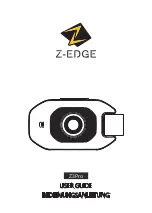
32
EN
2
Sh
ooting
guid
es
–
Im
provin
g your
shootin
g skill
s
Brightness – Exposure compensation
The camera automatically determines the aperture value and
shutter speed according to the brightness level. This is called
auto exposure. However, you may not be able to capture the
intended picture with auto exposure alone. In this case, you
can increase or decrease the auto exposure setting.
Compensate the exposure to enhance the
brightness of a summer beach or the whiteness of snow.
Compensate the exposure toward – when the area to be
shot is brighter but smaller compared to its surrounding area.
If you are unsure of how much exposure compensation is
required, try taking several pictures at various settings and then compare the pictures.
g
“Exposure compensation” (P. 51), “AE bracketing” (P. 52)
Color – White balance
Besides sunlight, there are other sources for illuminating the subject, such as tungsten and
fluorescent lighting. These types of lighting contain particular colors; therefore, the same white
object shot under different lighting has slightly different colors. Even under the same sunlight,
the colors in the picture differ depending on the sky conditions, the shadows of trees or
buildings, and other factors. White balance automatically corrects the effects from these types
of lighting and enables shooting with the right colors. You can usually obtain the right colors
with the white balance set to
[AUTO]
. Depending on the shooting conditions, however, you may
not be able to obtain the intended colors. In this case, change the setting accordingly.
g
“Selecting the white balance” (P. 64)
Fluorescent light
Tungsten light
Shade of tree
















































